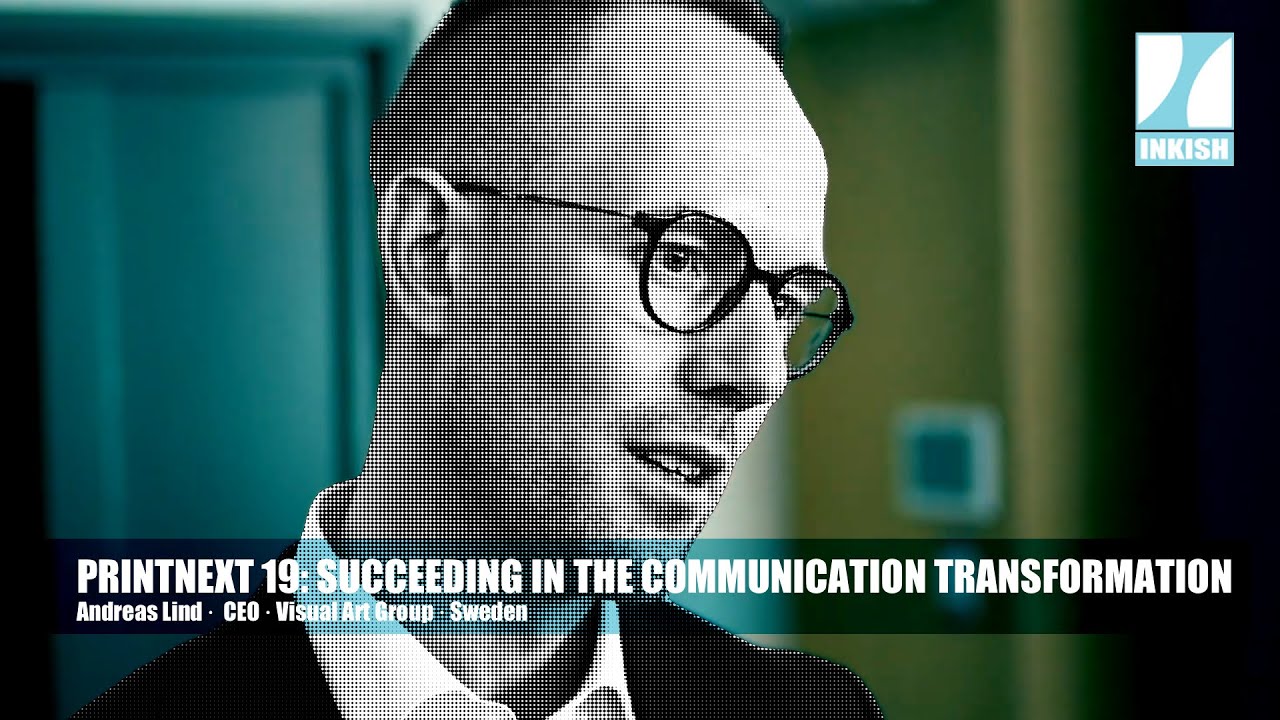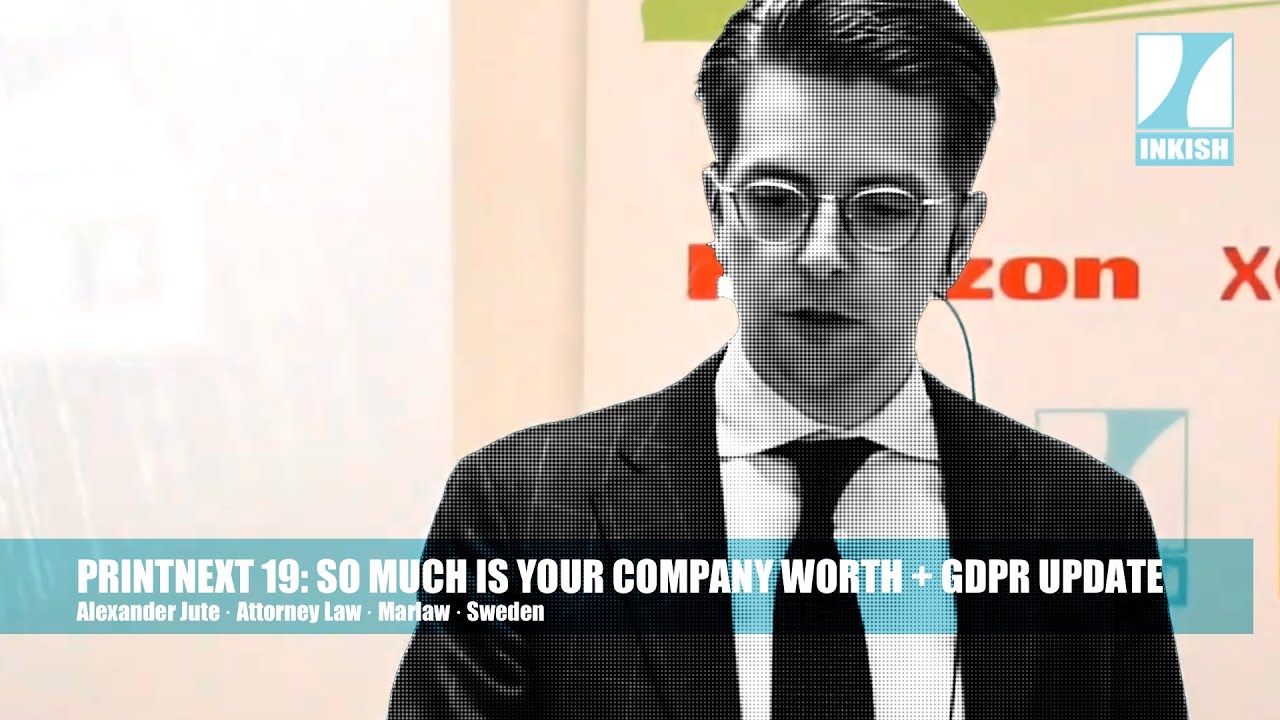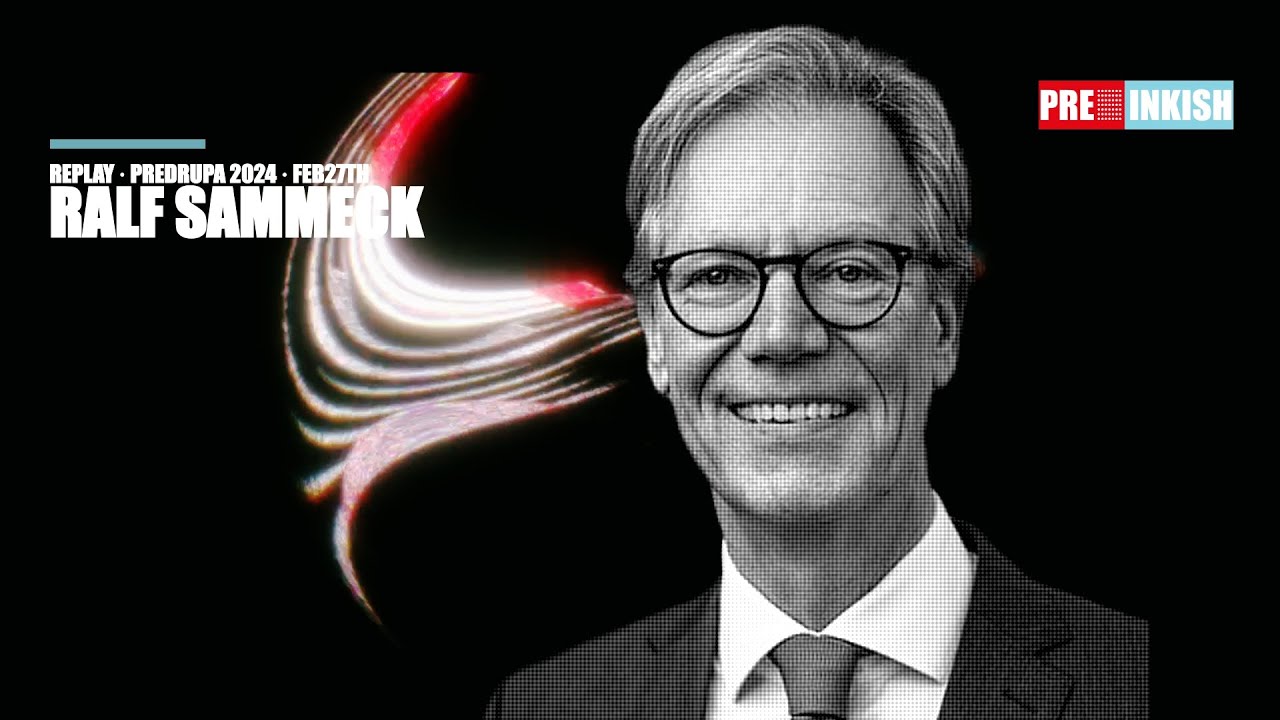PRINTNEXT19: Succeeding in the Communication Transformation · Andreas Lind · CEO · Visual Art Group
Andreas Lind is the CEO of Visual Art Group who has specialized in digital signage. In this presentation, you will get a great insight into this market and you will maybe even think this is a market that could be interesting for you – watch, like, and share – as usual.
My name is Andreas, and it’s actually pretty good to be here today because my career started in the printing business actually, as a pre printing or pre press, and also later in the printing business, working with magazine and commercials on out-of-home in subways and all that so I feel like the circle is closing in so great. Today, I’m going to talk about digital signage and how many of you in here work with digital signage today or are looking into the digital signage, have an interest in it? Yeah.
A few people, great. It’s good for me to know because then I can have it in a more general way, not getting to all the details, but to give you an idea and also regarding our journey that we have done at Visual Art, because we started back in 1997 as a production company having old passion for creativity and producing high end content in different type of screen based media. Then we transformed us into being this tech driven digital signage and media company that drives our clients to new levels by using a future proof to design a system. We’ll tell you little bit more about that.
As I said, we started off from production side, we transform into more tech, digital signage, full service, and today we are having a network consisting of 30,000 screens in 24 countries. We have learned a lot during these years and hopefully I can give you some ideas on what you could do and what you shouldn’t do.
Today the 30,000 screens that we have today is basically in the public and retail spaces. We work in the cities above ground with digital auto home screens, at the train station, airport, we also work a lot in shopping centers, both with the commercial screens and also the way finding and, you know, helping people their way around the shopping centers. We work a lot with QSR, Quick Service restaurants, as McDonald’s, convenience store, petrol station, food retailers, pharmacists, hospitality, et cetera, et cetera, et cetera. The important question is, what have we learned? We have learned a lot of things and we have done a lot of mistakes, trust me.
I remember personally only, only 10 years ago, with some of our clients you know, got the ability to have full motion, and trust me they used it, so it was too much motion. Everything was just like, thank you, moving on every direction. Did it drive attention? Yes. Did it drive effect, no. It was too much, but the market has matured and what we can see now is that digital have an effect. Trust me, I know the importance, especially in this context, the importance of the physical space and the analog signs. It’s really important, and I believe that the analog sign will still be there in ages, but you know you need to know how to interact with them and have a good communication in store and elsewhere by combining those.
Some findings. We know that digital outperforms analog just by the fact that a moving image draws attention. 50% more people look at the moving image compared to a static sign. That’s a fact. Also you tend to look at the moving image for twice as long, and that’s what all communication is all about right? To reach as many people as possible and taking a part of your communication.
We also know that with a digital solution you’re able to use data, to be more relevant by target shooting your communication. Push your communication due to weather or stock availability, or whatever it might be. We have seen because you probably heard about retail death and everything. I don’t believe in it myself. The strong brand will survive, but it is important for the physical store, the brick and mortars, to drive footfall. We have seen that when communicate on a digital screen but also analog screen, close to the point of sales, it actually drives footfall, which is the most important [KPIs 00:05:34] for end retailers.
We see that it drives sales. In general, just by converting an analog sign to a digital one close to the point of purchase, it’s around three to four percent in total sales. Then you can drive incremental sales and drive behavior. By doing food craving for example, showing a beautiful ice cream with a topping and everything when the temperature rise to a certain degree and it’s sunny. That will have a huge impact on sales if communicate that in a relevant context.
Another funny, or funny, I think it’s kind of funny, but it’s actually, you get the perception by using the digital format as it actually feels more fresh. We work in a train station, as we said before. They do, or the Swedish government that owns, they do tests twice a year and they’ve seen that you actually percept the arenas more safe by having moving content there. You get the feeling that the hamburger, a sausage, or coffee is more fresh. You also feel it’s a better quality. You have a lot of great effects on that.
Also one thing to say, and that’s a hazard. It’s good for you though in the printing business, but it’s not good for our mutual customers when they do all the in store material to drive their business when it doesn’t leave the boxes. Because we’ve seen that 62% of all in store communication material doesn’t even get from the boxes. That’s another fact with a digital screen is that you have control of your communication.
Is the sound good? Yep, good?
The journey is more complex than this, but four bullets, obviously, as I said. You need to understand analog and digital to have the best possible communication, because I don’t believe that digital alone will do it. Today, I believe more in print in that regard, but combined you can get great results. Also understanding the difference between broadcasting and narrow casting. I will give you an example of that later.
Obviously, it’s all about the customer experience. It’s about the customer journey, understand where and when your customer or customer’s customers are. Having the ability to be more relevant by using data is key. This is not crucial, but for company as visual art, for us it’s a part of our DNA to be curious, to be innovative, to find new things, to collaborate with new techniques. You know, you probably heard about everything with the augmented reality and machine learning and everything like that, but it’s happening right now. Everything is there, but you need to know how to adapt with it.
Just to give you a brief example of that, I don’t have it with me in my presentation, but we did, three months ago, we did the first ever voice interactive mirror display for H&M at Times Square. Why that is important is not just because it’s innovative and it drives a lot of PR, but it’s also close to the behavior that the customers have, so you can interact with the screen, you can take a selfie, and you get entered into a loyalty program. We saw that 30% more at Times Square for H&M, they had 30% more conversion rate with their loyalty program. You need to understand your customer, your customer’s customers and you need to be playful.
How am I doing? Good.
Once again, talking about digital and we used this example actually from Circle K, but we work a lot with digital menu boards and we’ve seen a lot of things how to drive the effect. As I said a few pictures ago, we see that we drive sales by converting, just by converting, to a digital screen. Also, as I said, that you get the control of your communication. Then, I don’t, it’s not easy to see in this. Oh I have a … Oh, forget it. When you put things on display, here is some buns but you also have the sausages, whatever it might be. If you combine that with motion, it gives the perception that it’s fresh, more fresh, and also by just adding some smoke on the coffee, it feels like it’s new, right? It drives sales. It also gives the percentage of a lower waiting time when you’re standing there.
I’m going to talk more about some opportunities you have with data and different triggers, but what we have done for McDonald’s is that McDonald’s, they are great in many ways and really [inaudible 00:11:56] precision, and they’re measuring sales every minute. We have built in in our system, we have built in different triggers that measures every cash transaction. If it takes too long time between each cash transaction, then it’s an indicator there becomes a queue, right?
We tell the system to automatically change the menu to fewer choices. All these type of smartness you can use, but once again you need to know also about the physical place, where is then trends, how is people behave in that physical space, a store, a restaurant, a public place, or whatever it might be.
Let’s put this in an easy way. Ichia, the one of you who is from Sweden know Ichia, but Ichia is the biggest food retailer in Sweden with stores all across Sweden. Ichia comes from a history of broadcast everything like a mass media. Not taking in consideration when it becoming spring down south in Sweden, or when it’s spring in [foreign language 00:13:26] up north. You need to understand how a long contrast Sweden actually differs in terms of weather, but also for customer, a client like Ichia, they have different brands. They have some brands more with the big cities, suburbans, and also on the countryside. You can’t have the same communication at all store at the same time.
What we did was completely change the game on how to broadcast and get the ability to narrow cast it. Make it more relevant. We built in our CMS, content management system, the ability for [Ichia 00:14:15] to actually be more relevant. Take into consideration what type of store it was. What type of zone within the store. Is it the entrance screen? Is it with vegetables, food? Is it the cashier point? Also of course what is really important when it comes to the design at an in store communication, it’s the ability to have day parts. If you heard about day parts because we have a different behavior in the morning than you have at lunch time and you have at dinner time. Also week parts. You’re in a different mindset on a Monday than you are on a Saturday, right? The ability to steer the communication is key to succeed with your in store communication and drive sales.
More in detail what we have done for Ichia is that when going into store on a Monday in Gottenberg, it might be sunny, we push for this. It’s barbecue time so we inspire to get this great barbecue for the week, but at the same time I’m walking into Ichia in [inaudible 00:15:40] where I live in Stockholm and it’s pouring down and my mindset isn’t at all on barbecue so why choose or show the same communication? No. At that time I get more, some other relevant communication, right?
We see that have a huge impact in the average food basket. The total turnover is increasing for Ichia by going full on just general broadcasting down to relevant narrow casting. Also, which I will tell more about in a separate picture is the ability to use these local triggers by data. Just let me give you a few example and do you know about RSS feeds and IPIs and all that? You can get different information automatically basically to your system by using data that already exists. You don’t need to invent anything.
Easily, which we are doing, is that we know at the exact geographic point at a given time of the day, and regarding what, let’s say, pollen levels, it’s in the air right now, at this location. Then it automatically push out information where you can get your medicine for pollen, for example. It’s really relevant then for me, because if I have pollen, anybody have a problem with pollen here? Yeah. You know, right? When it’s the level in the air, you know it, but if you’re not at that level it’s not relevant, so why waste time on choosing the content when it’s not relevant? At the specific place at a given time and the levels are high, then it’s relevant. Show it then and have a huge impact on sales and in branding.
Also with facial recognition which is really interesting, now we have some challenging with the GDPR, but we have done a lost of tests and we see also massive impact when it comes to relevance and also in sales, just by adding it’s a camera and some sensors and it’s a pretty easy technique, but you easily see and detect if it’s a female or a man. You can also see if it’s a woman, then you push a communication. There’s target for me as a man or you as a woman and it’s relevant and it drives sales. It’s all about relevance, but as I said, now with GDPR, it’s not as simple, but we see some changes regarding that because we don’t store any data, so to be continued. What is happening now also which is really interesting is that it’s not the demographic that’s so important, if it’s a female, if it’s a man. It’s not as important as how your emotion is.
The trend right now is emotion, so you can detect and see and with machine learning and artificial intelligence, you can actually learn the system to learn behavior and see is he stressful? Is he calm? Is she joyful? Is she stressed? Whatever it might be, and adapt that communication due to that. I don’t know if you heard about Alibaba in China. You probably heard of Alibaba. They’re actually doing a really cool thing now where they, or they already have it in place, but when somebody is calling, so you can measure that all through the voice. Somebody is calling in and are really disappointed and calling the help desk or service desk, whatever it might be, and are really disappointed, the system automatically learn to understand, “Oh, here is a person who is not satisfied. Put them in connection with somebody that’s really skilled to handling that,” and they get the information and say you get your money back. What is the problem? [inaudible 00:20:00] nothing. You know?
It’s always about how you can be before enhance the customer experience. I think that new technique data is one of the keys to that.
Then another example, you have already gotten this of course, but it’s the same technique, but the same thing there. I think that’s the easiest way to understand how you can be more relevant by using data because, you know, if it’s sunny, show sunglasses, sorry, and if it’s raining, show an umbrella. That can differs between where you are. It can be sunny right here and actually be raining just a couple of miles from here. Use the tools to be relevant. Okay, I need to be quick.
To sums things up, what is this all about? You need to always be relevant. I think that’s the biggest lesson to be said, regardless if it’s with digital signage or an analog sign or whatever it might be. To drive effect you need to be relevant and digital signage is a perfect tool for you to be relevant. Thank you.








































































